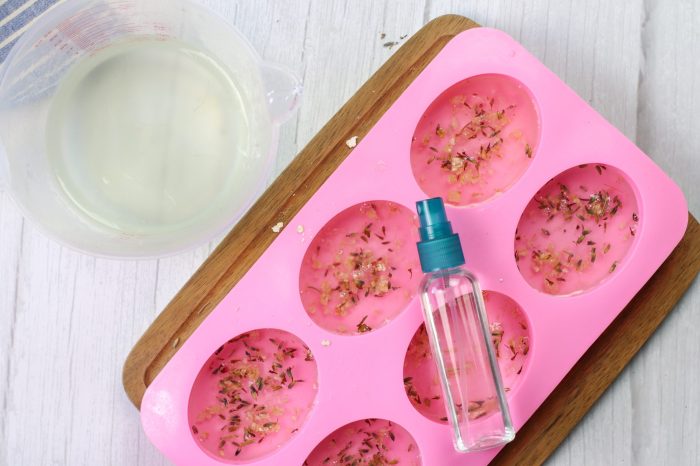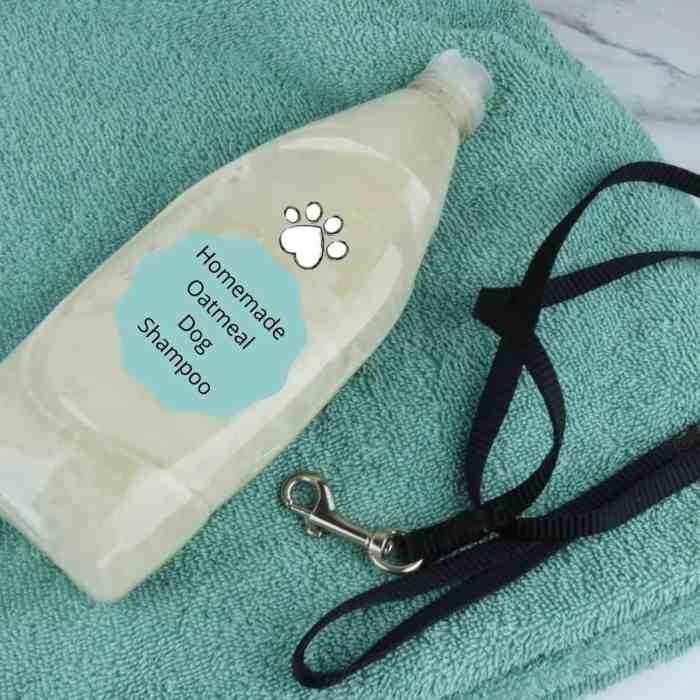DIY dog shampoo for itchy skin is a great way to soothe your furry friend’s discomfort and potentially save money on expensive store-bought options. With a little know-how, you can create a customized shampoo that addresses your dog’s specific skin needs using natural and gentle ingredients. From understanding the root causes of itchy skin to crafting effective recipes, this guide provides a comprehensive approach to managing your dog’s skin health.
This guide delves into the reasons behind itchy skin in dogs, exploring common causes, environmental factors, and specific skin conditions. You’ll discover the benefits of DIY dog shampoo, including its cost-effectiveness and ability to cater to individual needs. We’ll guide you through selecting the right ingredients, preparing homemade shampoo recipes, and applying it safely and effectively. We’ll also discuss important safety precautions, when to seek professional help, and long-term skin health management strategies. Ultimately, this guide empowers you to provide your dog with the best possible care for their itchy skin.
Additional Tips for Itchy Skin Management: Diy Dog Shampoo For Itchy Skin

In addition to using a DIY dog shampoo, there are several other steps you can take to manage your dog’s itchy skin and promote overall skin health. These include maintaining a clean and healthy environment, providing a balanced diet, and ensuring regular grooming.
Maintaining a Clean and Healthy Environment
A clean and healthy environment is crucial for preventing skin irritations and allergies. Here are some tips for keeping your dog’s surroundings clean:
- Regularly vacuum and mop floors to remove dust, allergens, and other irritants.
- Wash your dog’s bedding frequently, especially if they have allergies.
- Avoid using harsh cleaning products, which can irritate your dog’s skin. Opt for pet-friendly cleaning solutions instead.
- Keep your dog’s living space well-ventilated to prevent mold growth.
- Minimize exposure to irritants like smoke, pollen, and dust mites.
Importance of a Balanced Diet
A balanced diet plays a vital role in maintaining healthy skin and fur.
- Provide your dog with a high-quality diet that is rich in essential fatty acids, like omega-3s and omega-6s. These fatty acids are crucial for skin health and can help reduce inflammation and dryness.
- Consult with your veterinarian to determine the appropriate diet for your dog’s age, breed, and activity level.
- Avoid feeding your dog table scraps, which can be high in fat and salt and contribute to skin problems.
Regular Grooming
Regular grooming helps remove loose hair, dirt, and debris that can irritate the skin.
- Brush your dog’s coat regularly to remove dead hair and stimulate circulation.
- Bathe your dog with a gentle, hypoallergenic shampoo, such as the DIY shampoo you made, as needed. Avoid bathing too frequently, as it can dry out the skin.
- Trim your dog’s nails regularly to prevent scratching and skin irritation.
Identifying and Addressing Underlying Medical Conditions, Diy dog shampoo for itchy skin
It’s important to rule out any underlying medical conditions that may be contributing to your dog’s itchy skin.
- Consult with your veterinarian if your dog’s itching persists or worsens despite your best efforts to manage it.
- Your veterinarian may recommend allergy testing to identify specific allergens that are triggering your dog’s skin problems.
- They may also prescribe medication to manage underlying conditions like allergies, infections, or parasites.
Safety Precautions for DIY Dog Shampoo

It’s important to prioritize your dog’s safety when making your own shampoo. While DIY shampoos can be beneficial, there are some precautions you need to take to ensure you’re not putting your furry friend at risk.
Using Food-Grade Ingredients
Always use food-grade ingredients in your dog shampoo. This means that the ingredients are safe for consumption and have been tested for purity and quality. Avoid using any ingredients that are not specifically intended for human or animal consumption, as these could be harmful to your dog if ingested.
Always check the ingredient list of any product you use to ensure it is food-grade.
Risks Associated with Essential Oils
While essential oils can have various benefits, they can be toxic to dogs. Essential oils like tea tree oil, peppermint oil, and eucalyptus oil can cause skin irritation, respiratory problems, and even liver damage in dogs. It’s crucial to avoid using these oils in your dog shampoo.
If you’re unsure about the safety of a particular essential oil, consult your veterinarian.
Ingredients to Avoid in Dog Shampoo
Here’s a list of ingredients that should be avoided in dog shampoo:
- Artificial colors and fragrances: These can irritate your dog’s skin and may trigger allergies.
- Parabens: These are preservatives that can disrupt hormones and have been linked to health problems.
- Sulfates: These are harsh detergents that can strip your dog’s skin of its natural oils, leading to dryness and irritation.
- Phthalates: These are chemicals used to soften plastics, but they can be harmful to dogs.
By understanding the causes of itchy skin, choosing the right ingredients, and following the provided recipes, you can effectively create a DIY dog shampoo that soothes your furry friend’s discomfort. Remember to always prioritize safety by using food-grade ingredients and avoiding essential oils. While DIY solutions can be beneficial, it’s essential to consult a veterinarian if the itchiness persists or worsens. With a little care and attention, you can help your dog achieve a healthy and happy skin.
While DIY dog shampoos can sometimes be a good option for itchy skin, it’s crucial to remember that addressing the root cause is key. If the itchiness is related to a neurological condition, consulting a veterinarian is essential. They may recommend medications like riluzole , which has shown promise in treating certain neurological conditions. Once the underlying issue is addressed, a gentle, hypoallergenic shampoo can help soothe your dog’s skin and prevent further irritation.
